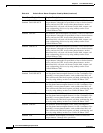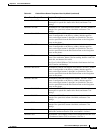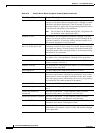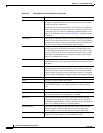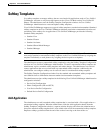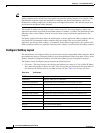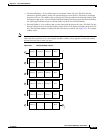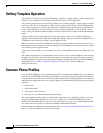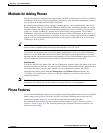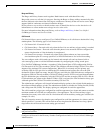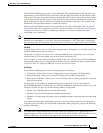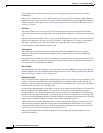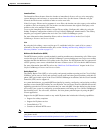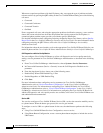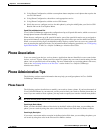
43-20
Cisco Unified CallManager System Guide
OL-14153-01
Chapter 43 Cisco Unified IP Phones
Softkey Template Operation
Softkey Template Operation
For applications such as Cisco Unified CallManager Assistant to support softkeys, ensure softkeys and
softkey sets are configured in the database for each device that uses the application.
You can mix application and call-processing softkeys in any softkey template. A static softkey template
associates with a device in the database. When a device registers with Cisco Unified CallManager, the
static softkey template gets read from the database into call processing and then gets passed to the device
to be used throughout the session (until the device is no longer registered or is reset). When a device
resets, it may get a different softkey template or softkey layout because of updates that the administrator
makes.
Softkeys support a field called application ID. An application, such as Cisco Unified CallManager
Assistant, activates/deactivates application softkeys by sending a request to the device through the Cisco
CTIManager and call processing with a specific application ID.
When a user logs in to the Cisco IP Manager Assistant service and chooses an assistant for the service,
the application sends a request to the device, through Cisco CTIManager and call processing, to activate
all its softkeys with its application ID.
At any time, several softkey sets may display on a Cisco Unified IP Phone (one set of softkeys for each
call).
The softkey template that is associated with a device (such as a Cisco Unified IP Phone) in the database
designates the one that is used when the device registers with call processing. Perform the association
of softkey templates and devices by using Softkey Template configuration in Cisco Unified CallManager
Administration. See “Softkey Template Configuration” in the Cisco Unified CallManager
Administration Guide.
Common Phone Profiles
Cisco Unified CallManager uses common phone profiles to define phone attributes that are associated
with Cisco Unified IP Phones. Having these attributes in a profile instead of adding them individually to
every phone decreases the amount of time that administrators spend configuring phones and allows the
administrator to change the values for a group of phones. Common phone profiles specify the following
attributes:
• Profile name
• Profile description
• Local phone unlock password
• End user access to phone background image setting
The common phone profile remains a required field when phones are configured; therefore, you must
create the common phone profile before you create a phone. Cisco Unified CallManager provides a
Standard Common Phone Profile that you can copy and modify to create a new common phone profile.
You cannot, however, modify nor delete the Standard Common Phone Profile.
For information on configuring common phone profiles, see “Common Phone Profile Configuration” in
the Cisco Unified CallManager Administration Guide.



